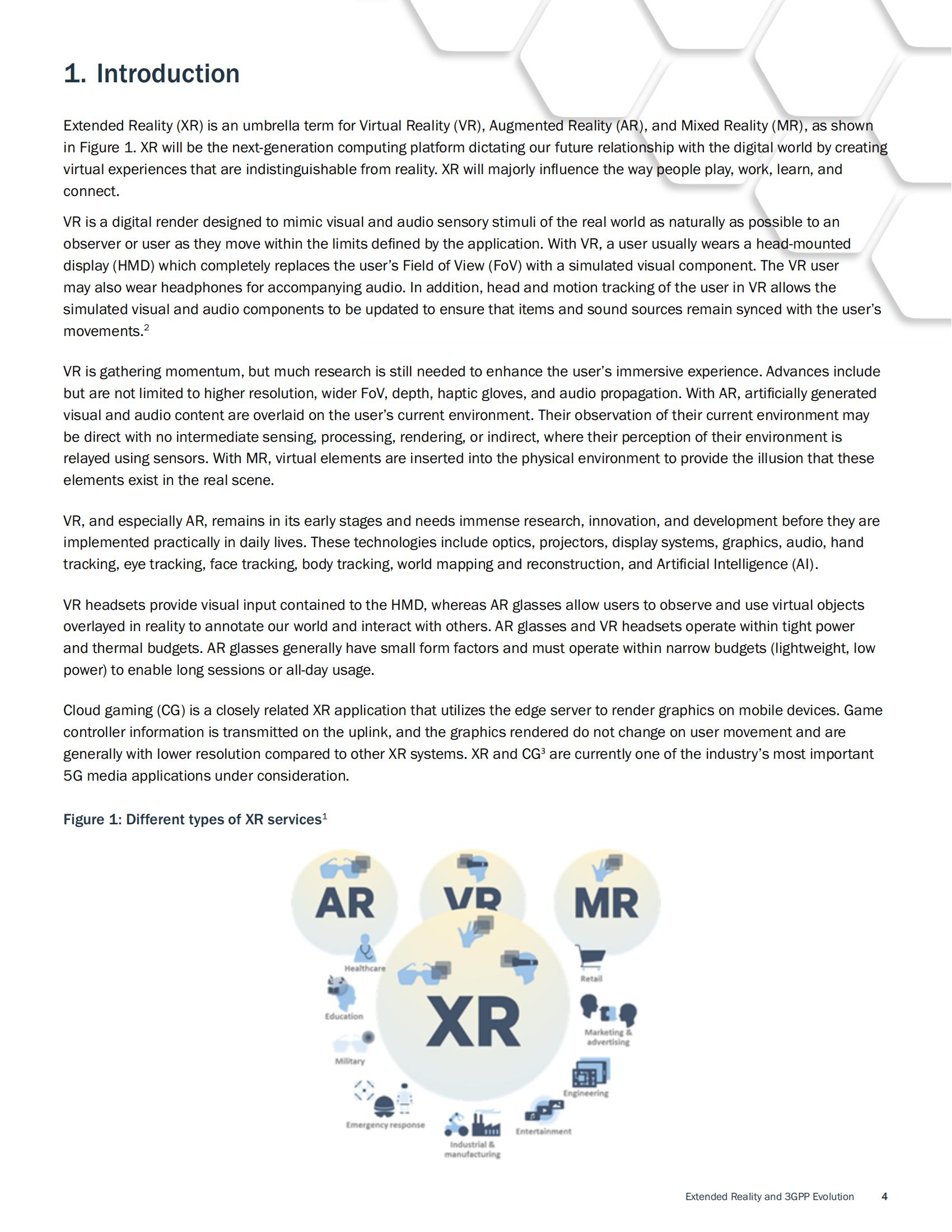Extended Reality (XR) is an umbrella term for Virtual Reality(VR),Augmented Reality (AR),and Mixed Reality(MR),as shown in Figure 1.XR will be the next-generation computing platformdictating our future relationship with the digital world by creating virtual experiences that are indistinguishable from reality.XR will majorly influence the way people play,work,learn,and connect.
VR is a digital render designed to mimic visual and audio serlsory stimuli of the real world as naturally as possible to an observer or user as they move within the limits defined by theapplication.With VR,a user usually wears a head-mounted display (HMD) which completely replaces the user’s Field of View(FoV)with a simulated visual component. The VR user may also wear headphones for accompanying audio. In addition, head and motion tracking of the user in VR allows the simulated visual and audio components to be updated to ensure that items and sound sources remain synced with the user’s movements.2
VR is gathering momentum, but much research is still neededto enhance the user’s immersive experience. Advances include but are not limited to higher resolution,wider FoV,depth,haptic gloves, and audio propagation. With AR, artificially generated visual and audio content are overlaid on the user’s current environment. Their observation of their current environment may be direct with no intermediate sensing,processing,rendering, or indirect, where their perception of their ervironment is relayed using sensors. With MR, virtual elements are insertedinto the physical environment to provide the illusion that these elements exist in the real scene.
VR, and especially AR, remains in its early stages and needs immense research, innovation, and development before they are implemented practically in daily lives. These technologies include optics, projectors, display systems, graphics, audio, hand tracking,eye tracking,face tracking,body tracking,worldmapping and reconstruction,and Artificial Intelligence(Al).
VR headsets provide visual input contained to the HMD, whereas AR glasses allow users to observe and use virtual objects overlayed in reality to annotate our world and interact with others.AR glasses and VR headsets operate within ticht power and thermal budgets.AR glasses generally have small form factors and must operate within narrow budgets (lightweight, low power)to enable long sessions or all-day usage.



本文来自知之小站
报告已上传知识星球,微信扫码加入立享4万+深度报告下载及1年更新。3天内不满意退出星球款项原路退回,欢迎试用。到期续费仅需5折
(如无法加入或其他事宜可联系zzxz_88@163.com)
